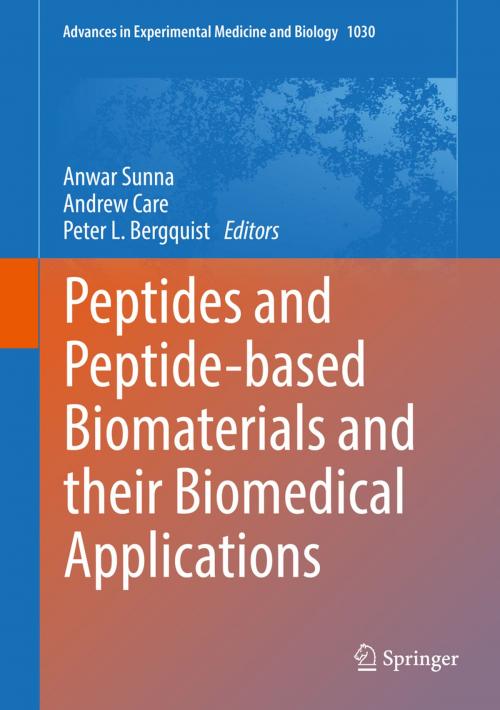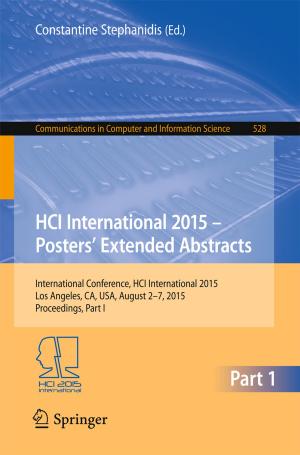Peptides and Peptide-based Biomaterials and their Biomedical Applications
Nonfiction, Science & Nature, Science, Other Sciences, Molecular Biology, Biological Sciences, Biochemistry, Health & Well Being, Medical| Author: | ISBN: | 9783319660950 | |
| Publisher: | Springer International Publishing | Publication: | October 26, 2017 |
| Imprint: | Springer | Language: | English |
| Author: | |
| ISBN: | 9783319660950 |
| Publisher: | Springer International Publishing |
| Publication: | October 26, 2017 |
| Imprint: | Springer |
| Language: | English |
Solid-binding peptides have been used increasingly as molecular building blocks in nanobiotechnology as they can direct the assembly and functionalisation of a diverse range of materials and have the ability to regulate the synthesis of nanoparticles and complex nanostructures. Nanostructured materials such as β-sheet fibril-forming peptides and α-helical coiled coil systems have displayed many useful properties including stimulus-responsiveness, modularity and multi-functionality, providing potential technological applications in tissue engineering, antimicrobials, drug delivery and nanoscale electronics. The current situation with respect to self-assembling peptides and bioactive matrices for regenerative medicine are reviewed, as well as peptide-target modeling and an examination of future prospects for peptides in these areas.
Solid-binding peptides have been used increasingly as molecular building blocks in nanobiotechnology as they can direct the assembly and functionalisation of a diverse range of materials and have the ability to regulate the synthesis of nanoparticles and complex nanostructures. Nanostructured materials such as β-sheet fibril-forming peptides and α-helical coiled coil systems have displayed many useful properties including stimulus-responsiveness, modularity and multi-functionality, providing potential technological applications in tissue engineering, antimicrobials, drug delivery and nanoscale electronics. The current situation with respect to self-assembling peptides and bioactive matrices for regenerative medicine are reviewed, as well as peptide-target modeling and an examination of future prospects for peptides in these areas.















